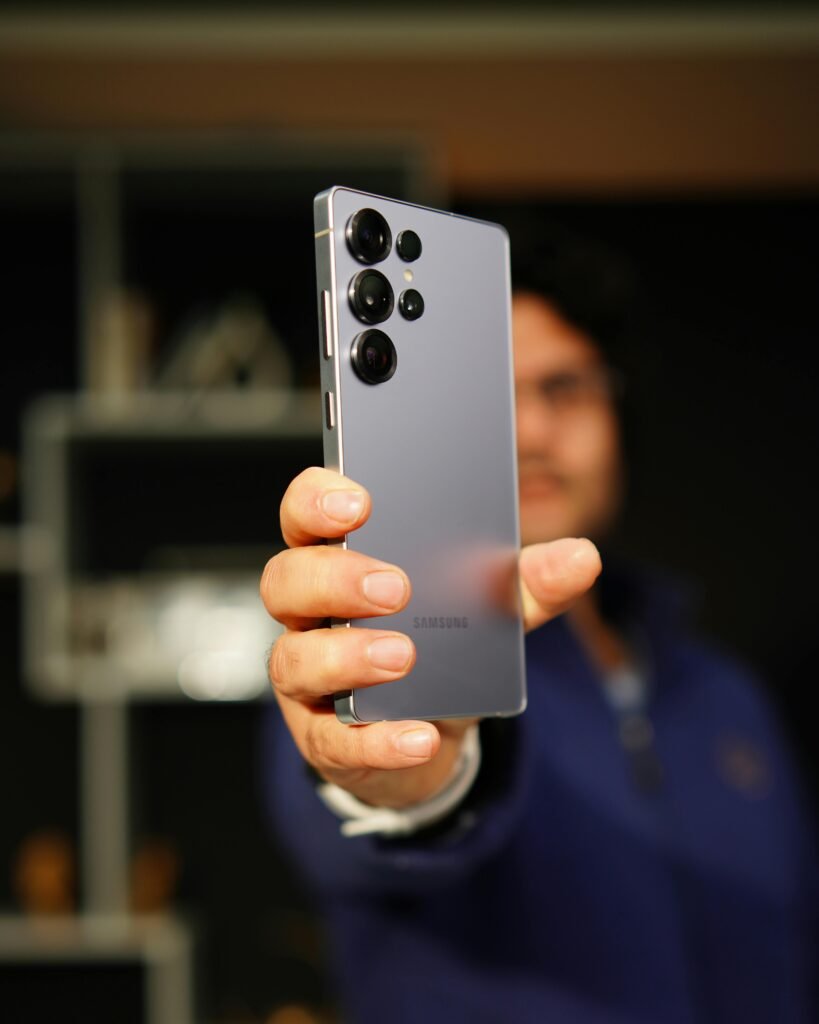
Introduction to Future Smartphones
The landscape of mobile technology has undergone significant transformations since the inception of smartphones. Initially, devices were primarily designed for communication, characterized by physical buttons and basic functionality. However, with the advent of touchscreens and advanced operating systems, smartphones evolved into multifunctional devices capable of catering to a wide array of needs. Today, they serve as essential tools that not only facilitate communication but also enable access to information, entertainment, and various services.
As we move forward, the next generation of smartphones is poised to embrace a plethora of groundbreaking innovations. This evolution is being driven by rapid technological advancements, changing consumer demands, and a greater emphasis on connectivity and integration with other devices. For instance, the integration of artificial intelligence (AI) is set to redefine user experiences, allowing for more intuitive interactions and personalized services. Furthermore, enhancements in network technologies, such as 5G and beyond, will facilitate faster data transfer and better connectivity, impacting how we use smartphones and other connected devices.
Moreover, sustainability is becoming increasingly important in the path of smartphone development. Emerging technologies may focus on eco-friendly materials and energy-efficient designs to address environmental concerns associated with electronic waste. This shift may also lead to innovative features such as modular designs that allow users to upgrade components rather than replace entire devices, thereby extending the lifespan of smartphones.
As we delve deeper into this exploration of anticipated advancements and trends, it is crucial to understand how these changes will collectively redefine the smartphone experience and what implications they hold for users and the industry alike. The future of smartphones promises to be a blend of technological innovation and user-centric design that aligns with contemporary needs and preferences.
Emerging Technologies Influencing Smartphone Design
The smartphone industry is undergoing a significant transformation, driven by groundbreaking innovations that promise to redefine device design and functionality. Among the most notable emerging technologies are foldable displays, which have garnered considerable attention in recent years. These innovative screens allow smartphones to expand their display size without increasing the overall footprint of the device. By enabling a seamless transition between compact and larger formats, foldable displays enhance multitasking capabilities and improve user experiences, making them a game changer in smartphone design.
Flexible materials also play a pivotal role in this evolution. The shift towards lightweight and durable materials not only facilitates the development of slimmer devices but also enhances their resilience against everyday wear and tear. Such materials can be molded and shaped, allowing manufacturers to experiment with new forms that were previously unfeasible. As a result, we can anticipate a future where smartphones are not just functional devices but also aesthetically pleasing artifacts that reflect individual preferences.
Another promising trend is the introduction of modular components in smartphone design. This approach allows users to customize their devices based on personal needs and preferences, fostering an environment of user-driven innovation. With modular smartphones, consumers can upgrade or replace specific elements, such as cameras or batteries, rather than purchasing entirely new devices. This flexibility not only extends the lifespan of the smartphone but also aligns with the growing demand for sustainability within the technology sector.
As these emerging technologies continue to develop, we are likely to see smartphones that are more adaptable, customizable, and user-friendly. The convergence of foldable displays, flexible materials, and modular components highlights a forward-thinking vision for smartphone design, showcasing how innovations are transforming our interactions with technology.
Artificial Intelligence and Machine Learning in Smartphones
The integration of artificial intelligence (AI) and machine learning (ML) in smartphones is poised to redefine user experience and functionality significantly. Over recent years, these technologies have been inherent in powering numerous features that enhance usability and efficiency. As smartphones evolve, AI and ML are anticipated to play a pivotal role in further refining these capabilities.
One notable area where AI enhances smartphone functionality is in user interfaces. Current smartphones can adapt to user behavior, learning preferences through algorithms that analyze daily usage patterns. For instance, AI-driven predictive text and suggestion features already streamline communication, while future innovations may lead to even more personalized interfaces that evolve in real-time, adapting seamlessly to various contexts and user needs.
Moreover, advancements in voice recognition powered by AI are likely to provide users with more intuitive and efficient interaction methods. As machine learning algorithms improve, the accuracy of voice commands will increase too, enabling natural conversations with virtual assistants. This could encompass executing complex commands, scheduling tasks, or managing smart home devices, making the smartphone an integral part of users’ daily lives.
Predictive analytics represents another transformative capability where AI gathers data to anticipate user needs. For example, based on historical usage data, smartphones may predict when a user might require specific apps, enhancing overall device responsiveness. Additionally, AI can help optimize battery usage, suggesting energy-saving modes, or identifying apps that drain power excessively.
In summary, the incorporation of artificial intelligence and machine learning in smartphones is set to create a more personalized, intuitive, and efficient user experience. As these technologies continue to develop, their impact will undoubtedly shape the trajectory of smartphone innovations, driving the next generation of mobile technology forward.
The Role of 5G and Next-Gen Connectivity
The advent of 5G technology marks a significant turning point in the evolution of smartphones and connectivity options. With its promise of enhanced data speeds, improved network capabilities, and lower latency, 5G is becoming a cornerstone of modern mobile technology. The integration of 5G into smartphones enables users to experience seamless streaming, rapid downloads, and instant application responsiveness, fundamentally altering how mobile devices are utilized in daily life.
One of the most notable impacts of 5G is its ability to support a higher density of connected devices. As the Internet of Things (IoT) continues to expand, the demand for efficient and high-capacity networks rises. 5G facilitates the interconnectivity of smart devices, ensuring that smartphones can effectively communicate with various sensors, wearables, and home automation systems. This interconnected landscape not only enhances everyday convenience but also opens avenues for innovative applications that require real-time data processing and communications.
Moreover, the reduction in latency provided by 5G networks enhances the performance of applications reliant on instantaneous feedback. For instance, augmented reality (AR) and virtual reality (VR) technologies are increasingly being integrated into mobile experiences, enabling immersive environments conducive to education, gaming, and remote collaboration. These applications demand high bandwidth and immediate data retrieval, requirements efficiently met by next-generation connectivity.
As we look toward the future, emerging connectivity enhancements, such as 6G, are already being discussed. These advancements promise to further elevate smartphone capabilities, offering speed and efficiency beyond current 5G technology. The implications of these innovations are vast, extending from individual consumers to businesses engaging with advanced mobile technologies.
Security and Privacy Enhancements
As smartphones have become essential to daily life, the importance of security and privacy in their development has increased significantly. Users are more aware of the potential threats to their data, prompting developers to prioritize advanced technologies that enhance user security and provide robust privacy protections. With the rise of digital transactions and personal data sharing, innovative solutions are being implemented to safeguard sensitive information.
One such advancement is the integration of biometric sensors into smartphones. These sensors allow users to authenticate their identity using unique biological traits, such as fingerprints or facial recognition. By employing biometric authentication methods, smartphones significantly reduce the risk of unauthorized access, as these features are difficult to replicate. As technology continues to improve, we can expect even more sophisticated biometric systems to evolve, enhancing the overall security framework.
Another significant aspect of future smartphone security lies in the potential implementation of blockchain technology. Blockchain provides a decentralized and immutable method of storing and verifying data. This technology can be employed to protect user information, making it exceptionally difficult for cybercriminals to alter or steal data. Blockchain integration not only strengthens data integrity but also fosters transparency in transactions, which is crucial in an era of increasing digital commerce.
Moreover, advanced encryption methods are being developed to ensure that user data remains safe during transmission and storage. Encrypted communications provide a layer of security that protects sensitive information from being intercepted by malicious actors. As more smartphones adopt end-to-end encryption, users can communicate more freely, knowing their conversations and transactions are secure.
These security and privacy enhancements are essential as we advance into a future where smartphones will play an even more prominent role in our lives. By prioritizing user protection through biometric sensors, blockchain technology, and encryption techniques, smartphone manufacturers are working diligently to address the growing concerns regarding data security.
Battery Life and Charging Innovations
As smartphone technology continues to advance, one of the most critical areas of development remains battery life and charging innovations. The demand for devices with longer-lasting batteries has prompted researchers and manufacturers to explore new technologies aimed at enhancing energy efficiency and sustainability. Recent advancements in battery technology are addressing these concerns and transforming how consumers interact with their devices.
One notable innovation is the development of fast charging solutions. Traditional charging methods typically require a significant amount of time to fully charge a device, often inconvenient for users with busy lifestyles. Fast charging technologies, such as Qualcomm’s Quick Charge and USB Power Delivery, allow smartphones to reach substantial battery levels in a fraction of the time. These technologies utilize higher voltage and current systems, leading to quicker energy transfer without compromising battery health over time. The implementation of such systems is essential in meeting the growing expectations of consumers who seek efficiency.
In addition to fast charging, wireless charging has also gained traction as a preferred method for powering devices. Wireless charging eliminates the need for physical connectors, providing a more convenient user experience. This technology has evolved substantially, with innovations like resonant inductive charging allowing devices to charge from a distance. The emergence of standards such as Qi has made it easier for consumers to find compatible charging stations, thus promoting a seamless use of wireless energy transfer.
Furthermore, the integration of energy-efficient components in smartphones plays a crucial role in extending battery life. By utilizing advanced processors and display technologies that consume less energy, manufacturers are enabling devices to run longer on a single charge. Innovations like OLED displays, which offer better energy management compared to traditional LCDs, exemplify this trend. Overall, these advancements in battery life and charging technology not only enhance the user experience but also contribute to more sustainable energy consumption in the long term.
The Impact of Augmented Reality (AR) and Virtual Reality (VR)
The advent of augmented reality (AR) and virtual reality (VR) technologies signifies a pivotal transformation in the capability of smartphones. As these innovations evolve, they are poised to redefine user engagement across various industries, creating immersive experiences that blend the digital and physical worlds. In particular, the integration of AR and VR into smartphones enhances user interaction and represents a significant step toward more intuitive interfaces.
Gaming stands to benefit immensely from the incorporation of these technologies. Future smartphones equipped with advanced AR capabilities will allow users to interact with digital environments that overlay the real world, offering a gaming experience that is both engaging and interactive. For instance, mobile games could leverage AR to create gaming scenarios that unfold within the player’s actual surroundings, fostering a new level of participation and competition.
Beyond entertainment, AR and VR are likely to revolutionize education. With smartphones acting as gateways, students could engage in interactive lessons that provide visual and practical applications of their studies. For instance, a smartphone application utilizing AR might allow biology students to visualize and manipulate 3D models of organ systems, enhancing comprehension and retention effectively. This approach can extend to various disciplines, making learning a more dynamic pursuit.
The retail industry is also expected to witness significant innovations through AR and VR technologies in smartphones. For example, customers may use AR applications to visualize how furniture would look in their homes before making a purchase, thereby improving the shopping experience. With the ability to simulate real-world situations, these applications can lead to more informed consumer decisions and increased customer satisfaction.
As smartphones are further integrated with AR and VR technologies, their applications will proliferate, ushering in a new era of connectivity and interaction that enhances everyday life.
Sustainability and Eco-Friendly Practices
The smartphone industry is undergoing a significant transformation as manufacturers increasingly focus on sustainability and eco-friendly practices in production and design. This shift is often driven by consumer awareness of environmental issues, regulatory frameworks, and the urgent need for a more sustainable future. One of the primary ways companies are addressing these concerns is through the use of eco-friendly materials in their devices. Manufacturers are exploring alternatives to traditional plastics and metals, opting instead for bioplastics, recycled aluminum, and other sustainable materials that reduce the carbon footprint associated with production.
In addition to sustainable materials, numerous smartphone manufacturers are implementing comprehensive recycling programs. These programs encourage customers to return their old devices, thereby allowing companies to recover valuable materials for reuse in new products. This closed-loop approach not only mitigates waste but also conserves natural resources. The introduction of take-back schemes and incentives for recycling further aligns with consumers’ growing commitment to environmental stewardship.
Energy-efficient processes are also becoming a vital part of smartphone production. Manufacturers are increasingly investing in renewable energy sources for their factories and aiming for greener supply chain management. Innovative practices such as reducing water usage, minimizing energy consumption, and utilizing clean energy solutions demonstrate the industry’s commitment to creating a more sustainable ecosystem. Several leading companies are even pledging to achieve net-zero emissions within specific timelines, which reflects a transformative approach to corporate responsibility.
Overall, the focus on sustainability and eco-friendly practices is shaping the future of smartphones. As consumer demand grows for environmentally-conscious products, it is likely that manufacturers will continue to innovate, taking more significant strides toward minimizing their environmental impact while meeting the technological needs of users.
Conclusion: The Future Landscape of Smartphones
As we reflect on the ongoing evolution of smartphones, it becomes evident that these devices are on the brink of profound transformation. The innovations discussed throughout this blog post highlight significant advancements in various domains, including artificial intelligence, augmented reality, and improved connectivity, all of which promise to reshape user experiences and interactions. The potential integration of AI into smartphones facilitates personalized usage patterns, enabling devices to learn from user behavior and preferences, thus enhancing everyday functionality.
Moreover, the advent of augmented reality (AR) stands to revolutionize how we interact with our surroundings. With smartphones becoming increasingly capable AR platforms, users can expect applications that merge the digital world with the physical, providing immersive experiences that go beyond simple communication. This convergence is anticipated to augment the utility of smartphones across sectors, from education and training to healthcare and retail, ultimately fostering a more engaging and interactive lifestyle.
Furthermore, enhanced connectivity options, such as 5G technology, will significantly impact the performance and capabilities of smartphones. Faster data transfer speeds and improved network reliability are set to enable richer digital experiences, supporting the trend toward smart cities and the Internet of Things (IoT). With smartphones acting as central hubs for various smart devices, users will gain unprecedented control over their environments, reinforcing their role as essential tools for modern living.
In conclusion, the future landscape of smartphones is poised for dynamic changes that will impact not only personal communication but also broader societal interactions. As these innovations unfold, they promise to redefine our lives, making smartphones indispensable in our day-to-day activities and shaping an interconnected world that enhances convenience, accessibility, and engagement.





1 thought on “The Future of Smartphones: Innovations Shaping Tomorrow’s Technology”